Graeme Obree and his Old Faithful bike put to the test in a wind tunnel: Here's how they did
Twenty-five years ago Graeme Obree revolutionised cycling aerodynamics with little more than his wits. But his radical bike and position were never tested — were they actually as good as everyone thought? - Photos by Sean Hardy - HARDYCC
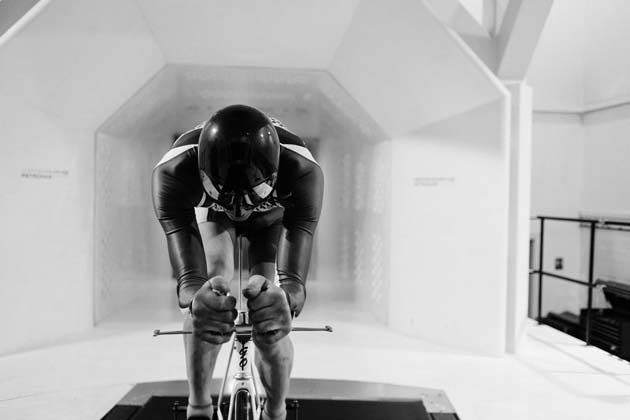
Graeme Obree.
I knew what I was going to the Mercedes F1 team’s wind tunnel to see. But actually seeing it was still disconcerting. When I walked into the control room, there in the 50kph gale on the other side of the glass was Graeme Obree.
He was unmistakable, aboard Old Faithful, in the tuck position with his arms folded into his shoulders, elbows tight to his sides, chest on the handlebars and chin over the front wheel.
It was like looking through a window to the 1990s. The unique shape of the Flying Scotsman himself, on a home-built bike, in the radical riding position that he used to give bike racing one of the biggest shake-ups it had ever had. I’ll be honest and admit it gave
me goosebumps.
There was more to it than nostalgia, though. The tuck position (or the ‘crouch’ as Obree calls it himself) and the successor ‘superman’ position, with arms outstretched, were both banned in the mid-1990s, and haven’t been used in racing since.
Twenty-five years ago wind-tunnel testing was rare, and almost completely confined to equipment rather than riders, so neither position had ever been tunnel tested. They were refined by Obree using nothing more than intuition.
So we have no objective measure of how good the positions are. Given all the speculation there’s been about them and about the rides that were done using them between 1993 and 1996, it’s a remarkable gap in our knowledge.
Get The Leadout Newsletter
The latest race content, interviews, features, reviews and expert buying guides, direct to your inbox!
Finally finding the answer was what Scottish clothing company Endura had brought Obree to Mercedes for, using the help of Simon Smart of aerodynamics consultant Drag2Zero.
Old Faithful reproduction
“OK, wind off,” says Smart. The tunnel operator taps his keyboard. The wind roar dies down — the tests are all being run at 52.7kph, to replicate the pace of Obree’s second Hour record, set in 1994. Graeme sits up on the bike, slows his pedalling, then stops and gets off. Smart works away for a few moments, looking at his screen, while Obree joins us in the control room.
>>> Power vs aerodynamics: how to get the balance right
They’ve already tested a conventional 1990s style position before I get there, very similar to the one used by his rivals at that time, so this is the big reveal — how will they compare? There is an air of nerdy expectation.
“OK,” says Smart finally. “That had a CdA [aerodynamic drag] of 0.17. The conventional position was 0.20, so at 52.7kph, that would cut the power required from 400 watts to around 350.”
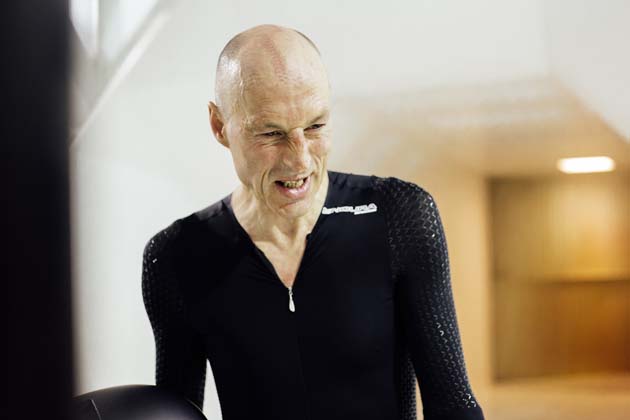
Obree is visibly surprised, as is Smart. That’s a very big saving — and perhaps 50 per cent more than I’d have expected. It would suggest a real-world speed increase of around 2-2.5kph.
“Let’s keep going,” says Obree. He goes back into the tunnel and switches the bars on the bike from the short tuck bars to the stretched-out superman set-up that he adopted after the tuck was banned. I am a little disappointed to find the bike isn’t actually Old Faithful, but a replica he’d built two days earlier when he realised that the original was in the National Museum of Scotland and he couldn’t borrow it.
Superman v tuck
The testing process is repeated — several minutes of roaring wind, and a chance to see the extreme-looking superman position in action. There is another surprise. The general assumption has always been that the superman position was almost as aerodynamic as the tuck. In fact it’s significantly worse, about 50 watts, roughly 2kph, and only marginally better than the standard 1990s positions used by most of Obree’s rivals.
“Maybe I started clever and then got fit?” suggests Obree mischievously after the run. “It does seem weird that I won the Worlds in 1995 using superman, if it’s 50 watts worse than the crouch from 1993. But having come back to riding in the crouch for the first time in 25 years, I remembered how much energy it takes in your hands and shoulders.
It might be more aero than superman, or other positions, but it takes a lot out of you. I was in there with aching shoulders thinking, ‘This is a young man’s position!’”
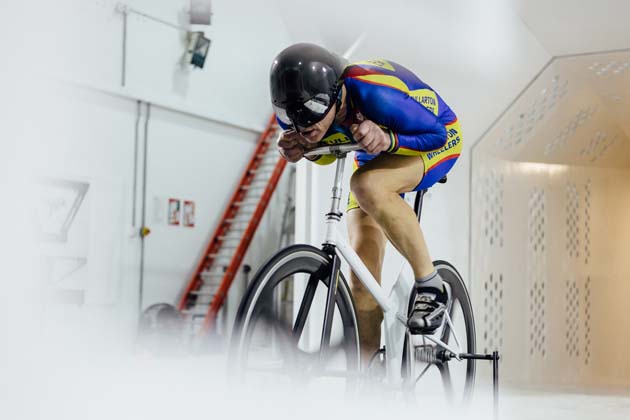
In comparison, the superman position, while very extreme looking, is more manageable. “There’s very little effort wasted. You’re locked in, no rocking about. I thought it was very close to the crouch in terms of aero, but maybe it’s rider comfort that’s more important.
Even knowing what we’ve found out today I’d have switched to it anyway, it’s fast, it’s efficient on the road and the track. It even looks better — it’s graceful. In 1996 when the Italians won the Olympic team pursuit I remember watching it and thinking it was like a work of art.”
The awkward question though is still about the tuck and the big savings. When Obree broke the Hour record in 1993, he rode 51.596km, to add 445m to the record of Francesco Moser. If the tuck position is 2km better than a tri-bar position, well, in that case would it be reasonable to say that without the position he wouldn’t have broken the record?
>>> Graeme Obree to attempt Herne Hill flying lap record at new event in June
“That would be fair,” says Obree. “When I broke that record in Norway, the build-up was all wrong. The track was very cold. If I’d had a normal position and an ideal build-up I think I’d still have been able to break the sea-level record, which was 50.6km, and the amateur record was 48.5km. I’d have gone quite fast whatever, but maybe the harsh truth is that without the position I wouldn’t have broken the record.”
There is, however, a bit more to it than that. The position and the bike were all Obree’s own work — he had the confidence of his convictions, and cared not a jot that no one else in the world was doing it like him.
“Whatever I stepped up with was mine. It was my creation. All the contracts I had to ride events in 1993 specified that I ride Old Faithful. People loved that bike. If Old Faithful had been invented by someone else and I’d just ridden it I might have felt differently about finding out how big an advantage it was, but the whole thing came from me.”
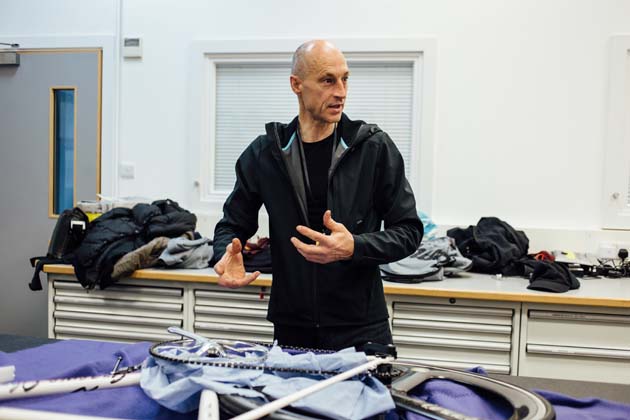
Obree was what feels like the last of a breed — the lone rider, working without a sophisticated team of coaches and sports scientists. He was always contrasted with Chris Boardman, who in many ways was the prototype for the modern GB team — scientific, detailed, measured.
Science v intuition
Boardman saw the inside of his first wind tunnel 26 years ago. Yet it was the ‘maverick genius’ Obree who made the big leaps forward in aerodynamics and bike design, despite never having been in a wind tunnel until this session.
“I was just going on feel,” he says. “I was even trying to imagine a bunch of air molecules hitting me when I was out on the road. I was using a fixed gear, so I could feel what was fast. Tunnels have the advantage that you’d know if something wasn’t ever going to work and wouldn’t spend ages working on it. On the other hand, everyone else would have been able to find out that it worked too.”
As it was, it took more than a year after Obree’s records for Boardman to experiment with the tuck position — his reported comment at an experimental session at Manchester Velodrome was, “Oh, s**t, it works.” He was quicker to adopt the superman position, using it to set what’s still the greatest distance ever ridden in an Hour record, 56.375km in 1996.
>>> From Tullio Campagnolo to Graeme Obree: 10 racing inventors that changed cycling
“I don’t regret not riding an Hour in superman,” says Obree. “Chris was just made for it — his arms and his build were perfect, and he and Peter Keen [Boardman’s coach] really made the most of it. They had to change the rules because that record was so good no one would ever break it.”
And that’s another question — rules. The UCI was so alarmed by Obree’s innovations that it introduced increasingly extensive rules about bikes and riding positions. Widely seen at the time as a ‘stop the Scot’ campaign, what does Obree make of them now?
Graeme the gracious
He is surprisingly conciliatory about it all: “In the nine years from Francesco Moser’s Hour record, the sport went from round steel tubes, spoked wheels, drop bars, like it had always been, to tri-bars, Boardman, the Lotus bike, a bloke bowling out of Scotland to steal the Hour… and they hit the panic button,” he says.
“They put in rules, but it did provide stability. Riders now can use older, cheaper bikes and still be competitive, so it’s levelled things up.
“The original tuck was going too far — Moser was using a 90-degree seat angle on his bike, with a pad to support his chest.”
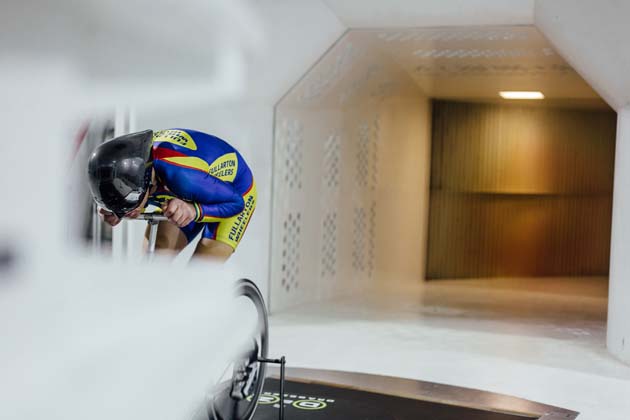
The final experiment of the day is Obree on a current-day set-up, using a Scott time trial bike with typical upward-tilted arms and wearing an older version of Endura’s skinsuit. It’s not an exact comparison, since this time he uses a road bike with a little extra drag from the brakes and gears. But the result is a CdA of 0.188, meaning the power required for the yardstick Hour pace was 380W.
That’s 20W better than the superman position. But, incredibly, it’s still 30W higher than for the original tuck position on Old Faithful. In other words, Obree’s set-up of 1993 was 1.5kph faster.
Twenty-five years on, we still haven’t caught up with Obree.
Old Faithful test data
Endura’s test data shows the tuck position on Old Faithful gives an 8.5 per cent saving on the power required on a modern set-up.
| Set-up | CdA | Total power at 52.7kph, including tyre and chain drag (watts) | Power to overcome aerodynamic drag at 52.7kph (watts) |
| 1990s tri-bar track bike | 0.204 | 384.0 | 410.0 |
| Old Faithful, tuck position | 0.172 | 323.7 | 349.8 |
| Old Faithful, superman | 0.200 | 376.4 | 402.5 |
| Current UCI road TT bike | 0.188 | 353.9 | 379.9 |
Graeme Obree's ground-breaking career
Graeme Obree, from Ayreshire, burst onto the international scene in 1993 when he broke the world Hour record, in Hamar in Norway, riding 51.596 and breaking the nine-year-old record of Italian legend, Francesco Moser.
Almost unknown outside UK time trialling, Obree used a unique ‘tuck’ riding position, with his elbows folded in tightly by his sides and his hands under his shoulders. He personally developed and built a bike to optimise the position, a machine that became known as Old Faithful.
He went on to use the position to win the world individual pursuit title in 1993, beating his long-term UK rival Chris Boardman along the way.
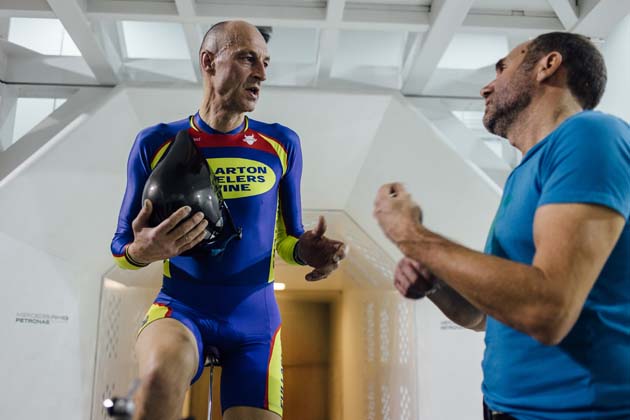
He broke the Hour record again, riding 52.713km in early 1994, before the UCI moved to ban the position and disqualify him from the 1994 Track World Championships.
Following the banning of the tuck position, Obree developed the ‘superman’ position, with his arms stretched out in front of him. He used it to win the 1995 pursuit World Championship.
The superman position was quickly copied by most of Obree’s rivals, including Chris Boardman, who used it to break the Hour record in 1996, with 56.375km, before that position was also banned by the UCI.

Thank you for reading 20 articles this month* Join now for unlimited access
Enjoy your first month for just £1 / $1 / €1
*Read 5 free articles per month without a subscription

Join now for unlimited access
Try first month for just £1 / $1 / €1
Michael Hutchinson is a writer, journalist and former professional cyclist. As a rider he won multiple national titles in both Britain and Ireland and competed at the World Championships and the Commonwealth Games. He was a three-time Brompton folding-bike World Champion, and once hit 73 mph riding down a hill in Wales. His Dr Hutch columns appears in every issue of Cycling Weekly magazine
-
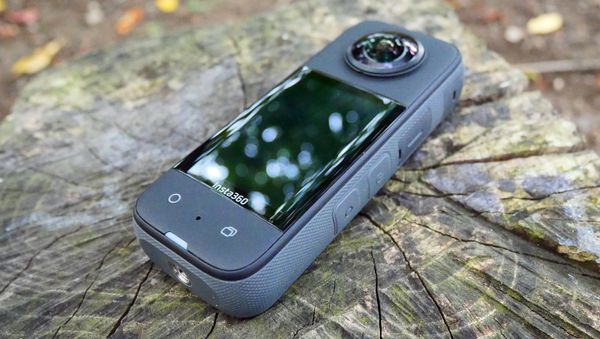 I have been capturing my cycling adventures for over 20 years, and two of the best action cameras for cyclists have just hit their lowest prices on Amazon
I have been capturing my cycling adventures for over 20 years, and two of the best action cameras for cyclists have just hit their lowest prices on AmazonDeals Amazon has slashed the price on Insta360 cameras, including the highly rated X3, which has a huge 30% off
By Paul Brett Published
-
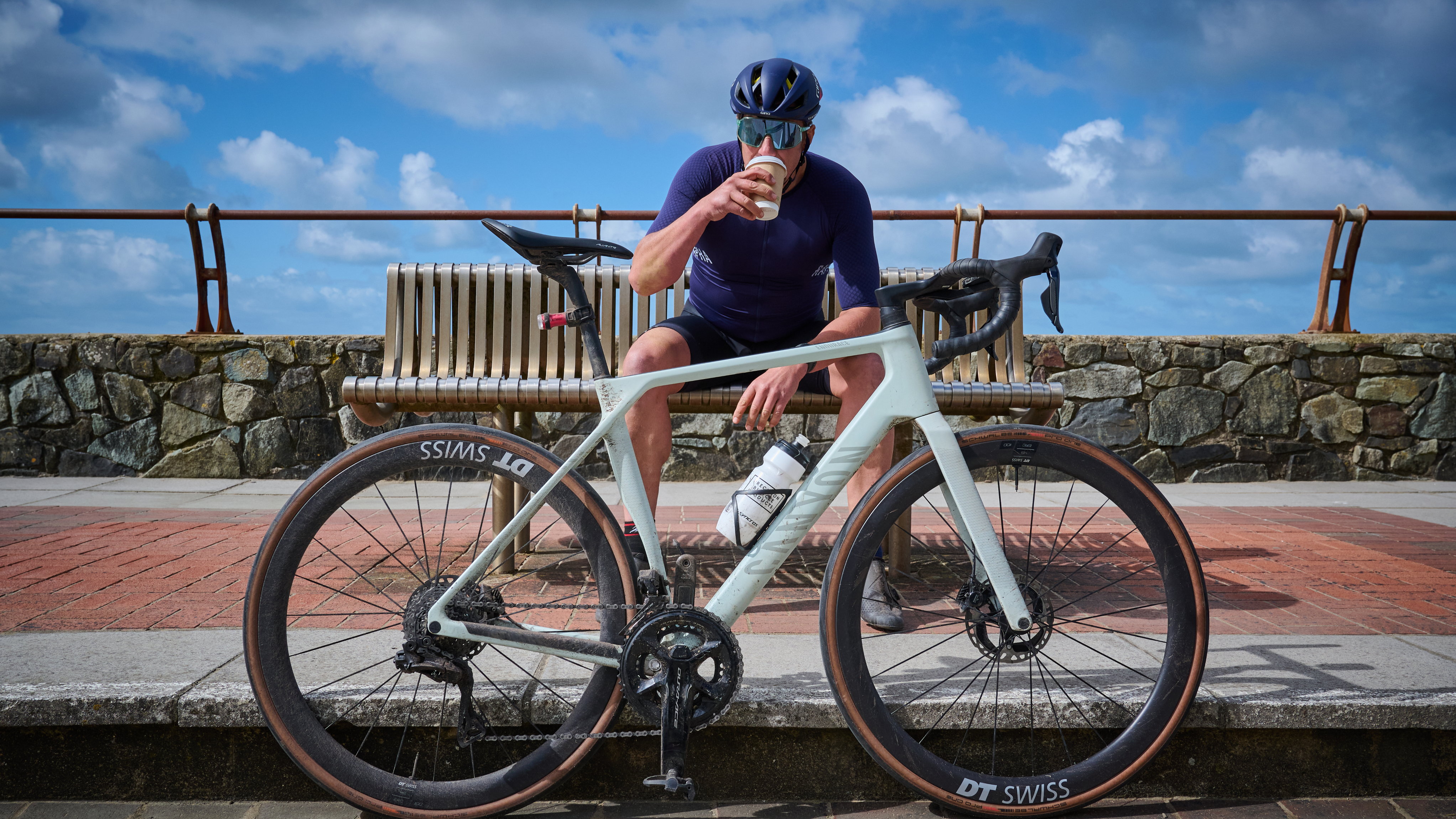 'I've already lost 2 kilograms and my head feels clearer': I'm a month into sober curiosity and have never felt so good on the bike
'I've already lost 2 kilograms and my head feels clearer': I'm a month into sober curiosity and have never felt so good on the bikeBeginning to fear for his health, Steve Shrubsall swapped beer and telly for turbo sessions and books, here’s what happened
By Stephen Shrubsall Published
-
 This country is banning time trial bikes for juniors – I think it's a great idea
This country is banning time trial bikes for juniors – I think it's a great ideaCycling equipment is expensive enough, and winning shouldn't only be for the wealthy
By Tom Davidson Published
-
 Bumps, cracks and potholes: Just how bad are the roads for the Paris Olympics time trial?
Bumps, cracks and potholes: Just how bad are the roads for the Paris Olympics time trial?Riders have been unimpressed by the conditions of the time trial course. We went to look at it close up
By Tom Davidson Published
-
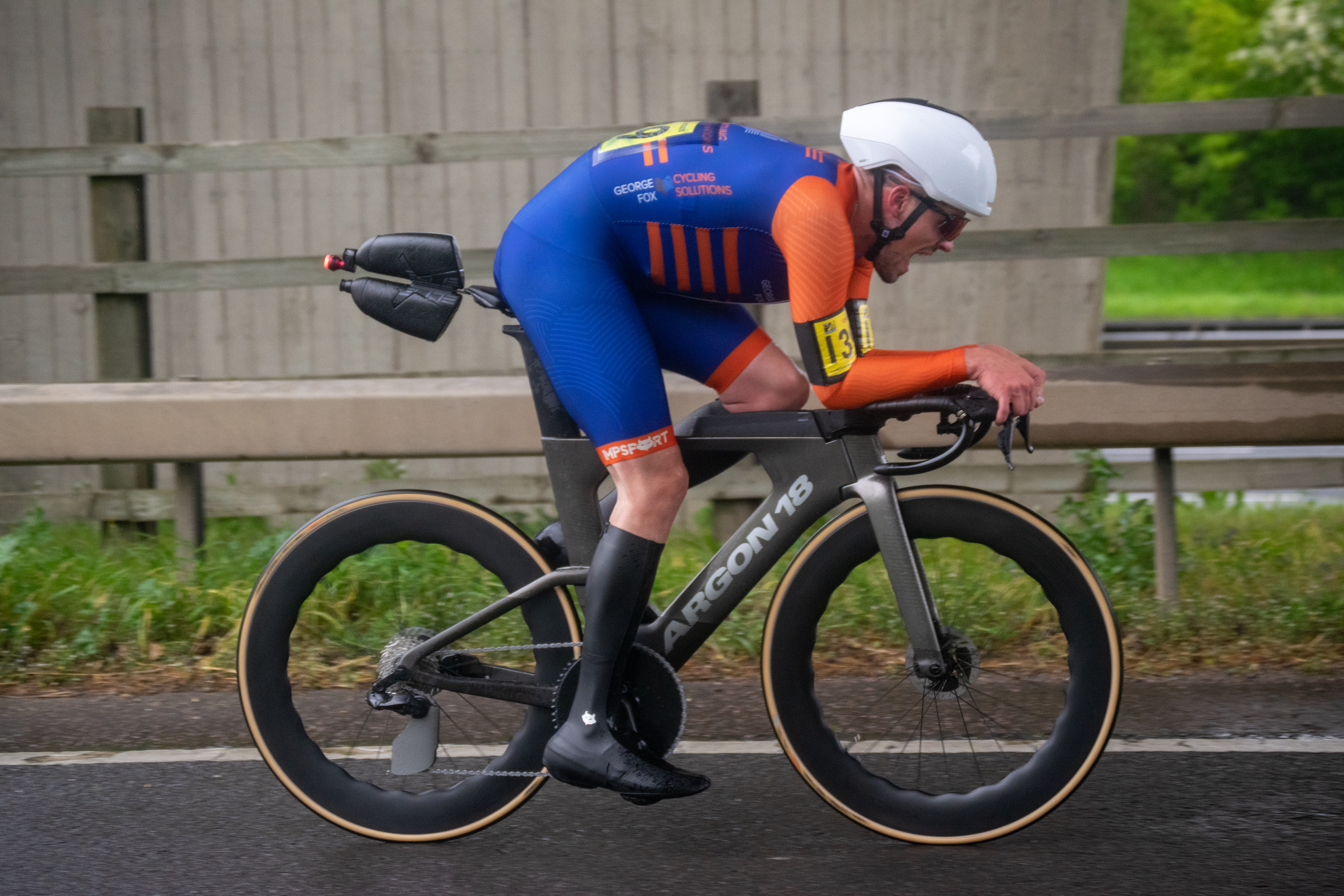 'People love to hate it': Cyclist breaks 10-mile time trial record on controversial road bike
'People love to hate it': Cyclist breaks 10-mile time trial record on controversial road bikeGeorge Fox's triathlon frame has raised eyebrows but is approved for use
By Tom Davidson Published
-
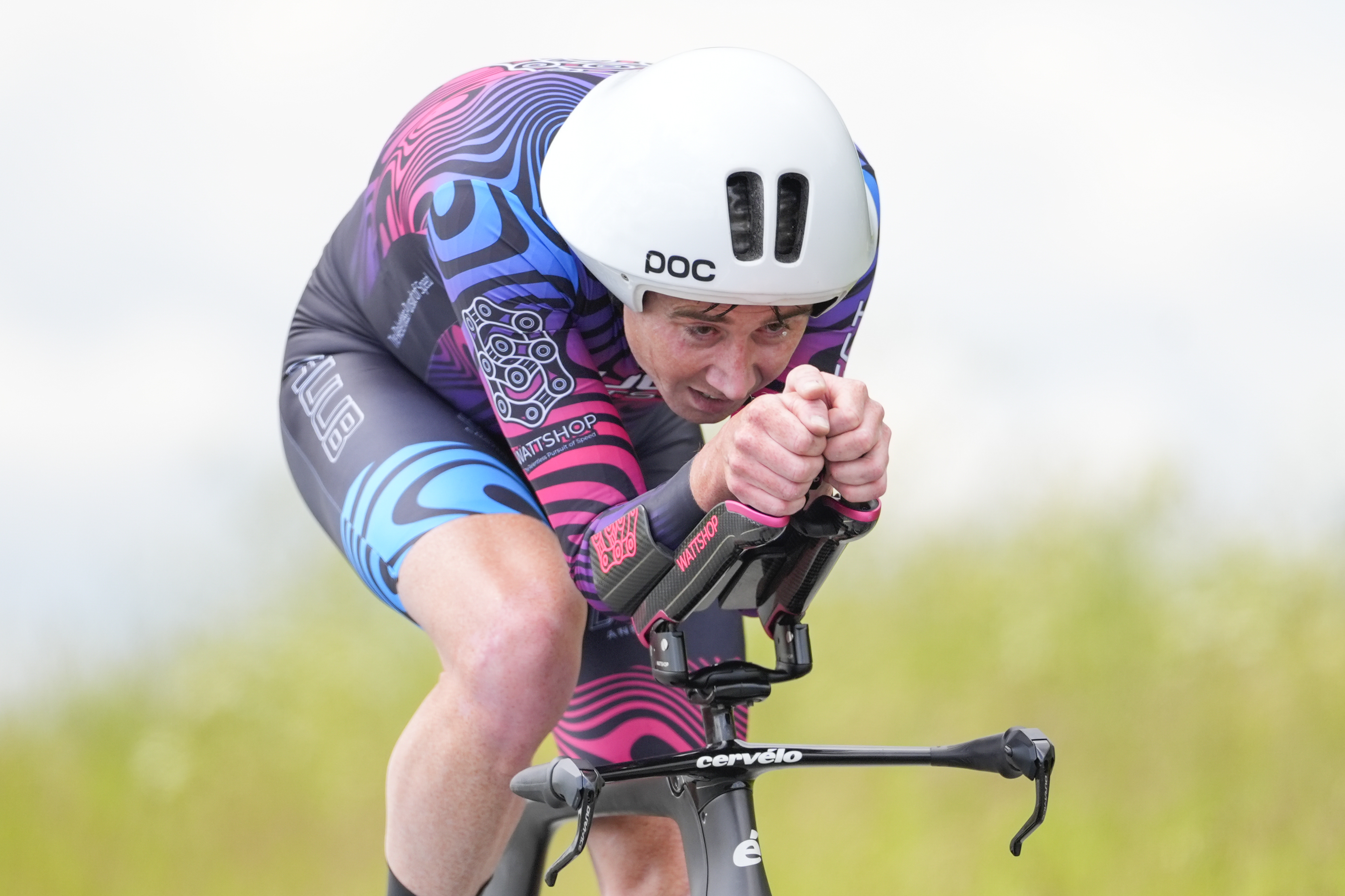 31mph for 100 miles: How John Archibald broke one of the toughest time trial records
31mph for 100 miles: How John Archibald broke one of the toughest time trial records'It really wasn't a pleasant thing to do,' says Scot after latest victory
By Tom Davidson Published
-
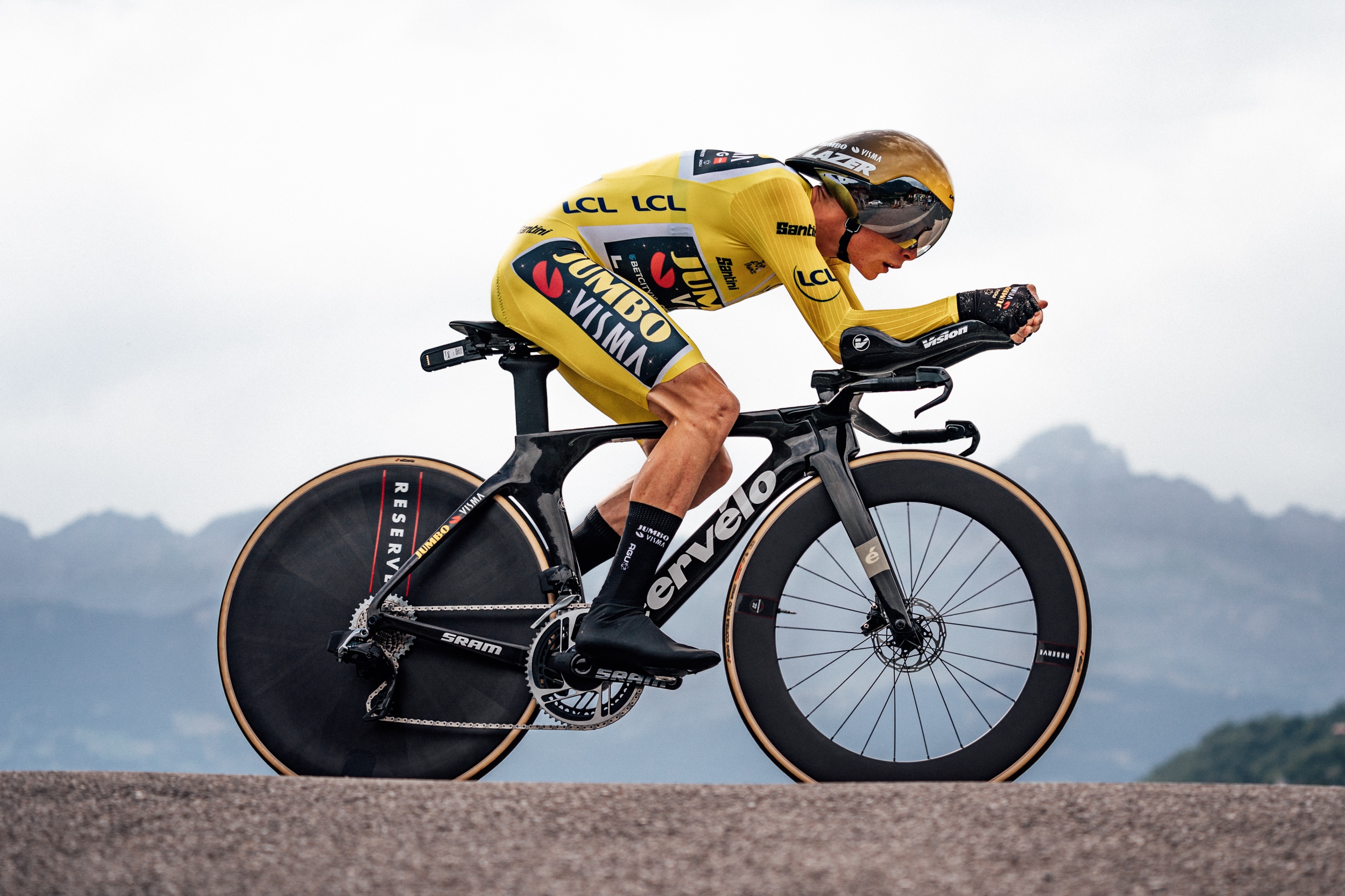 New study reveals impact of chest fairings in time trials - and it’s big
New study reveals impact of chest fairings in time trials - and it’s bigObjects stuffed in skinsuits offer ‘significant’ drag reduction and can save seconds against the clock
By Tom Davidson Published
-
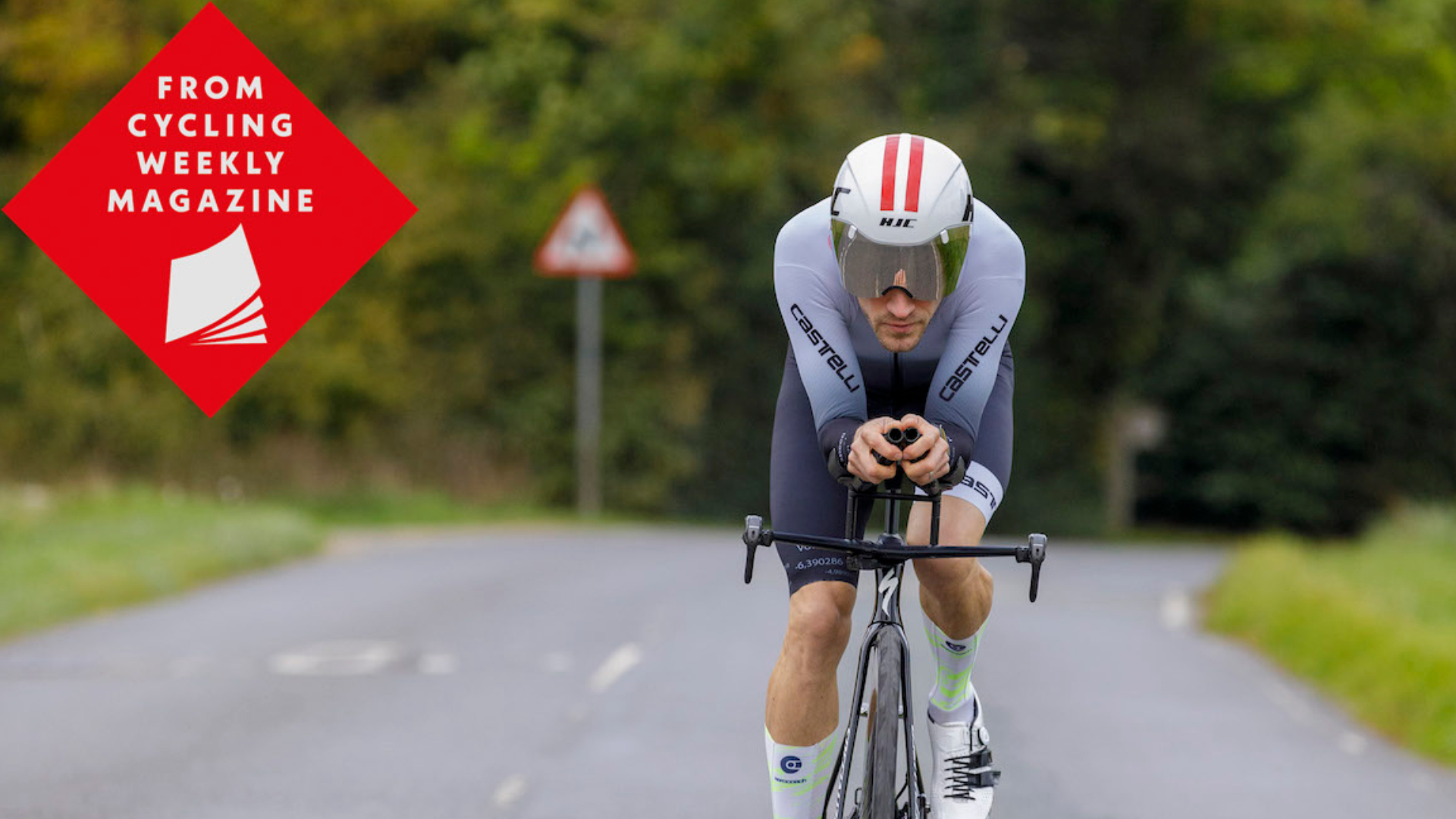 Racing on a budget vs no expense spared - here's the difference money made to my cycling performance
Racing on a budget vs no expense spared - here's the difference money made to my cycling performanceJust how much faster could an average rider go if they had access to all the best aerodynamic kit and knowledge? Cycling Weekly Editor, Simon Richardson went to find out...
By Simon Richardson Published
-
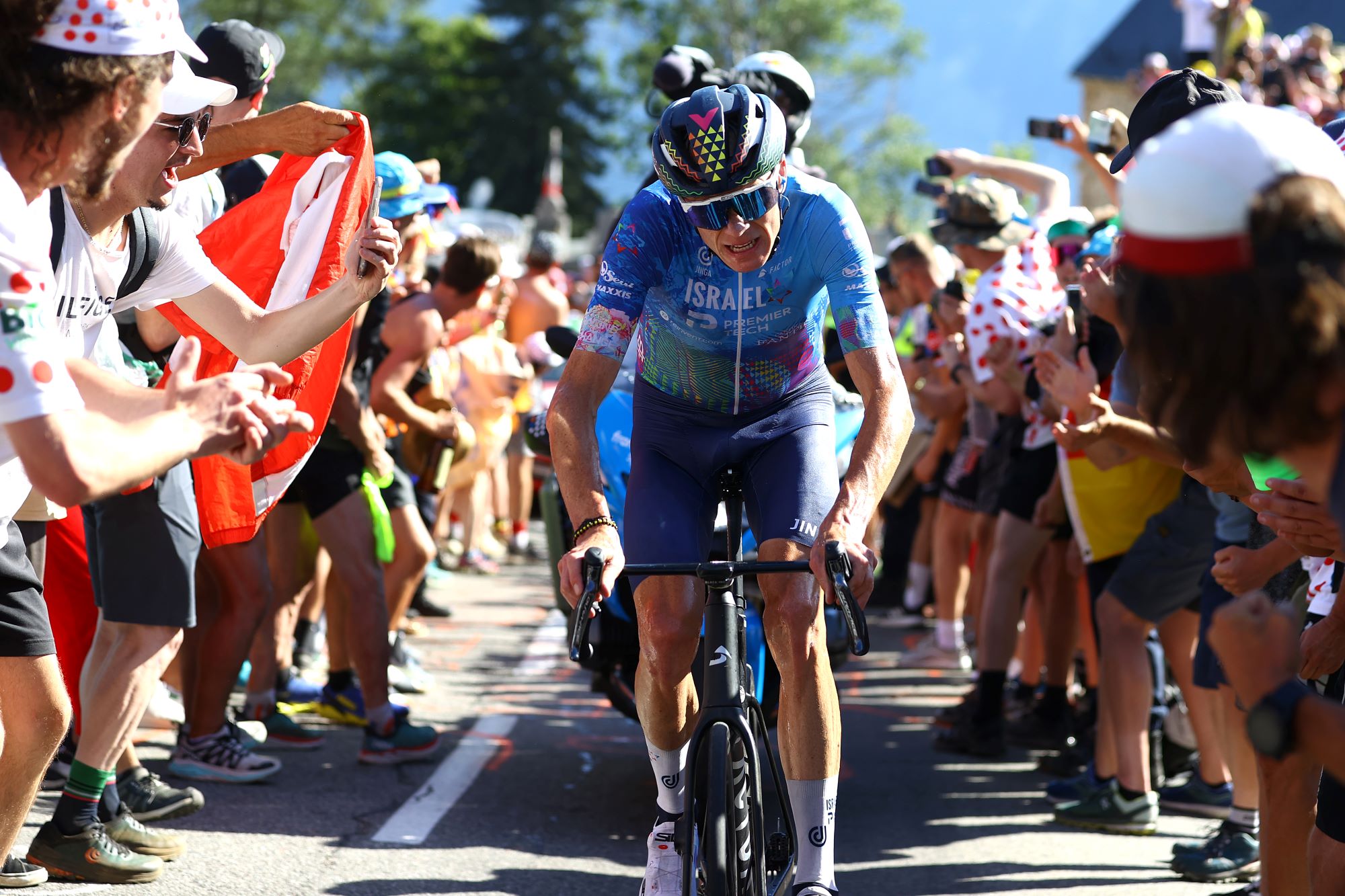 CW Live: Chris Froome targets return to 'top level'; UCI tightens ITT rules; Strava responds to price hike criticism; Topless protesters arrested at TDU; Tributes paid to Lieuwe Westra; Scott recalls 'cracking' bikes; Toon Aerts the PE teacher
CW Live: Chris Froome targets return to 'top level'; UCI tightens ITT rules; Strava responds to price hike criticism; Topless protesters arrested at TDU; Tributes paid to Lieuwe Westra; Scott recalls 'cracking' bikes; Toon Aerts the PE teacherThe latest news in the world of cycling
By Tom Davidson Last updated
-
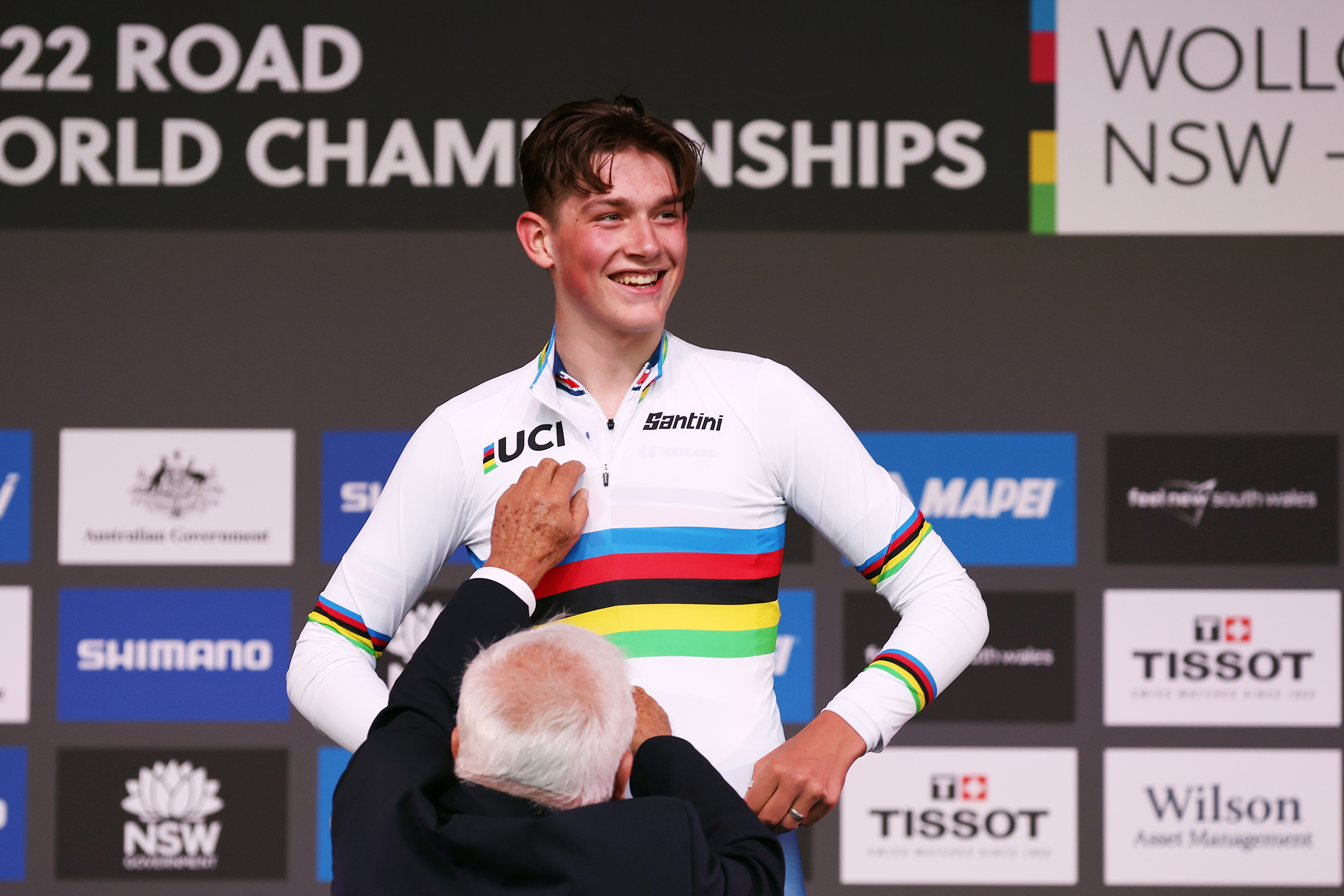 Sky high heart rates and sleepless nights: What it's like to be the parents of a World Champion
Sky high heart rates and sleepless nights: What it's like to be the parents of a World ChampionThousands of miles from Wollongong, the parents of Britain’s new time trial world champions battled their nerves
By Tom Davidson Published